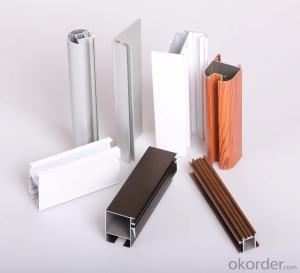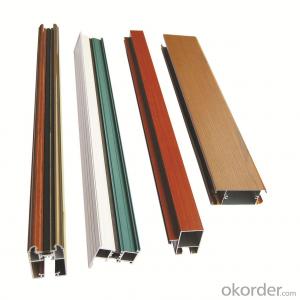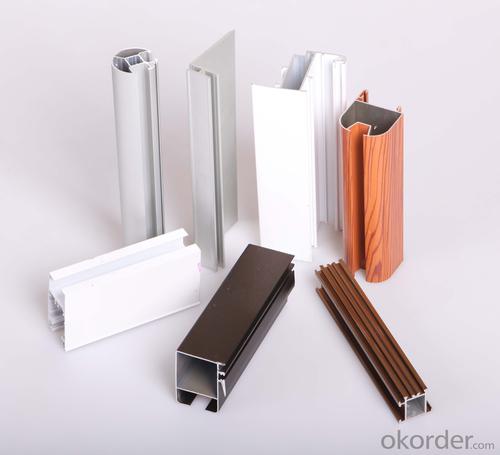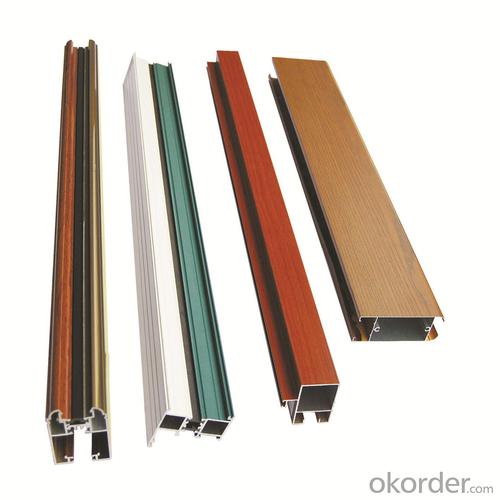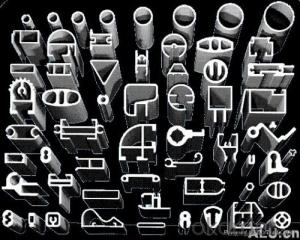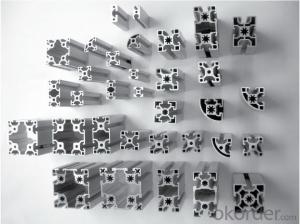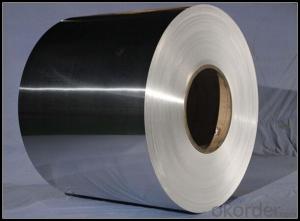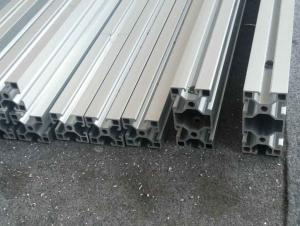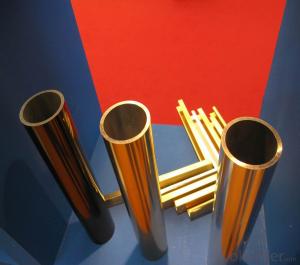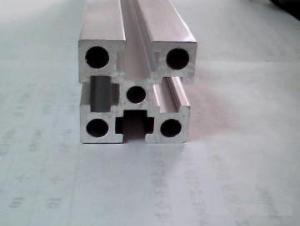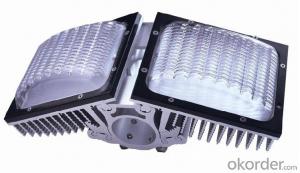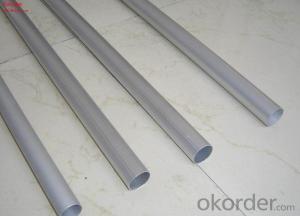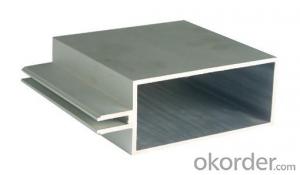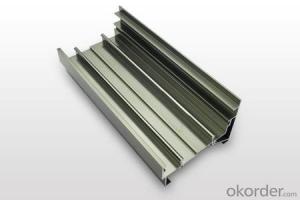LED Tape Light Strip Aluminum Profiles for Furniture Anodized Aluminum Frame
- Loading Port:
- China Main Port
- Payment Terms:
- TT OR LC
- Min Order Qty:
- -
- Supply Capability:
- -
OKorder Service Pledge
Quality Product, Order Online Tracking, Timely Delivery
OKorder Financial Service
Credit Rating, Credit Services, Credit Purchasing
You Might Also Like
Material | Alloy 6063,6061,6005or according to customer’s choice |
Temper | T3, T4, T5, T6 |
Surface | Anodize, electrophoresis, powder coating, PVDF coating, wood grain painting, matted, etc. |
Color | Any colour based on Standard Germany RAL Mark |
Length | Coating 6.5 meters, Anodizing 6.5 meters, Mill finish 5 meters |
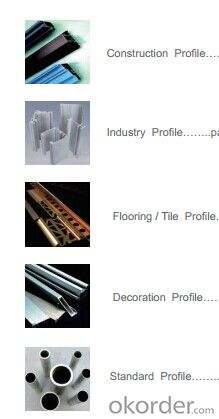
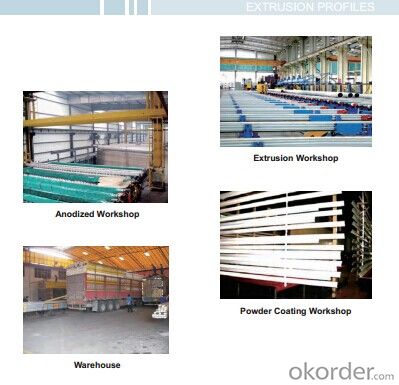
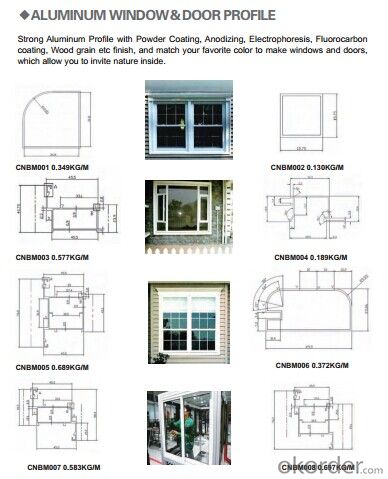
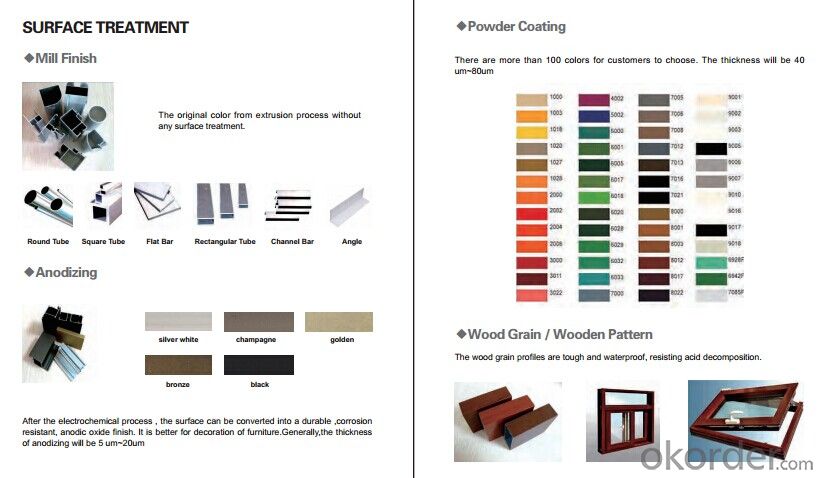
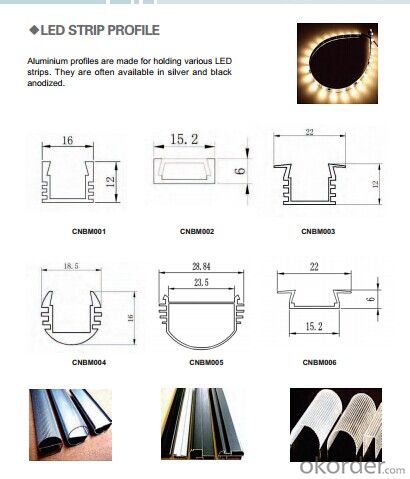
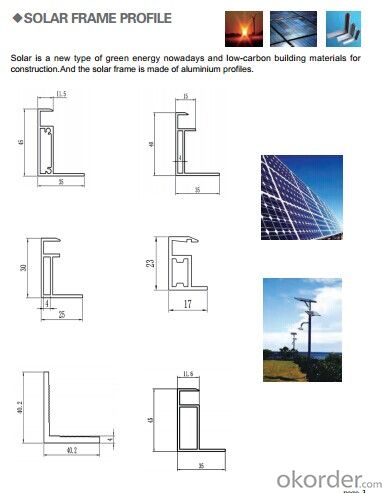
- Q: This question asks for a description of the various forms and dimensions of aluminum profiles that are typically utilized in the construction industry.
- <p>Aluminum profiles used in construction come in various shapes and sizes to cater to different structural needs. Common shapes include angles, channels, I-beams, H-beams, T-profiles, and rectangular or square tubes. Sizes vary based on the thickness of the aluminum and the dimensions of the profile, such as width, height, and length. For instance, an H-beam might have a depth ranging from 100mm to 900mm and a width from 50mm to 300mm. The selection of the right profile depends on the specific requirements of the construction project, such as load-bearing capacity, aesthetic considerations, and cost efficiency.</p>
- Q: This question asks for a comparison between aluminum profiles and other materials concerning cost and availability.
- <p>Aluminum profiles are generally cost-effective and widely available compared to other materials. They are less expensive than materials like stainless steel and titanium, making them a popular choice for various applications. Aluminum is also readily available in the market due to its high demand in industries such as construction, automotive, and aerospace. Additionally, aluminum has a lower density, which means it's lighter and easier to transport and handle, further reducing costs. However, the cost and availability can vary depending on market conditions, geographical location, and specific alloy types.</p>
- Q: Xi'an XAC aluminum sales site.
- For the choice of aluminum profiles, here are a few suggestions for you to refer to:First: very cheap, do not chooseAs follows: the cost of industrial aluminum material = the spot price of aluminum ingot, the processing cost of extrusion aluminum material, the freight of packing material. These are transparent, the cost of aluminum profiles are similar, significantly lower than the market price, the first possibility: the weight per meter less; second: aluminum is the use of recycled materials; third: material loss amplification (not according to the actual sales amount of meters).Second: only understand the sale material supplier does not chooseExplain as follows: preparing goods, recruit a few operator, big online promotion can be opened. Those who are often hurt are our buyers. Miss wiring mostly do not know how to use, only know the unit price. How to use to meet customer needs; how to make the most cost-effective; in different venues that kind of connection is the best; these are they can not answer accurately. Only know the cheapest and recommended profile connection the cheapest; this connection is the lowest cost, but the cost of artificial, a connection is the weakest, aluminum convenience wouldn't be reflected, and will bring much trouble for the future reconstruction. But the wiring girl will push it one way.Third: in production of aluminium supplierExplain as follows: in the production of aluminum suppliers, are generally engaged in this industry for more than 10 years, and their users have very rich experience, have a good understanding and knowledge of the quality and performance of products, suitable for the requirement of the customers will recommend price is a good product, choose a convenient and practical accessories.
- Q: What are the various materials incorporated in the production of aluminum profiles?
- <p>Aluminum profiles are primarily made from aluminum alloys, which can include different elements to enhance properties such as strength, corrosion resistance, and machinability. Commonly used alloys are 6063, 6061, and 6082. Other materials may include magnesium, silicon, copper, manganese, and zinc, which are added to achieve specific alloy characteristics. Some profiles may also incorporate reinforcing materials like fiberglass or steel for added strength, or coatings such as anodized layers, powder coating, or paint for improved aesthetics and corrosion resistance.</p>
- Q: Are aluminum profiles suitable for earthquake-resistant structures?
- Yes, aluminum profiles can be suitable for earthquake-resistant structures. Aluminum is lightweight and flexible, allowing it to absorb and dissipate the energy generated during an earthquake. Additionally, aluminum profiles have excellent strength-to-weight ratio and corrosion resistance, making them a suitable choice for seismic applications. However, the design and engineering of the structure, along with appropriate reinforcement, are crucial factors in ensuring its earthquake resistance.
- Q: Can aluminum profiles be used in the construction of solar panels?
- Yes, aluminum profiles can be used in the construction of solar panels. Aluminum is a lightweight and durable material that is commonly used in various industries, including construction and solar energy. It offers several advantages when used in the manufacturing of solar panels. Firstly, aluminum profiles provide structural support and stability to the solar panel system. They can be easily shaped and formed into various designs, allowing for flexibility in panel assembly. Additionally, aluminum has excellent corrosion resistance, ensuring the longevity and durability of the panels in different weather conditions. Furthermore, aluminum profiles are highly conductive, which is crucial for the efficient functioning of solar panels. They help to dissipate heat generated by the solar cells, preventing overheating and enhancing the overall performance and lifespan of the panels. Moreover, aluminum is a sustainable and eco-friendly material. It can be easily recycled and reused, reducing the environmental impact of solar panel production. This aligns with the principles of renewable energy and sustainability, making aluminum profiles a preferred choice in the construction of solar panels. In conclusion, aluminum profiles can be effectively utilized in the construction of solar panels due to their structural strength, corrosion resistance, thermal conductivity, and sustainability. Their usage ensures the reliability, efficiency, and eco-friendliness of solar panel systems.
- Q: What are the different bending radii available for aluminum profiles?
- The different bending radii available for aluminum profiles can vary depending on the specific profile and its dimensions. However, common bending radii for aluminum profiles typically range from 1.5 to 3 times the profile's wall thickness.
- Q: Will the aluminum profile be deformed at about 100 degrees?
- Subject to circumstances:1, aluminum material or brand2 、 what is the forming state of aluminum profile, such as conventional: O, T4, T5, T6 and so on3. How long is it within 100 degrees of heat? Continuous or intermittent entry, such as intermittent access, interval time, etc.4, the aluminum profile forming itself has a certain mechanical strength, such as tensile and yield and ductility, etc., but these mechanical strength is based on different materials (section shape) in different extrusion processing (T) Inferior.For example, a solid bar around 10MM, material 6061-T6, a short time into the furnace temperature of 100 degrees, the annealing temperature will make its hardness drops more quickly, then a long time will decrease, but no hardness.The material you say can not be deformed, the aforementioned points need to be clear, or any answer is biased, and I hope to help you!
- Q: How do aluminum profiles resist corrosion?
- Aluminum profiles have a natural resistance to corrosion due to the formation of a protective oxide layer on their surface. When exposed to oxygen in the air, aluminum reacts and forms a thin layer of aluminum oxide. This oxide layer acts as a barrier, preventing further oxidation and corrosion of the metal underneath. The oxide layer is tightly bonded to the aluminum surface, making it extremely durable and resistant to environmental elements such as moisture, chemicals, and UV radiation. Additionally, aluminum profiles can be further enhanced with various surface treatments such as anodizing or powder coating, which provide an additional layer of protection against corrosion. These treatments not only enhance the aesthetic appeal of the profiles but also improve their resistance to corrosion, making them suitable for a wide range of applications in various industries. Overall, the natural oxide layer and the ability to apply additional protective coatings make aluminum profiles highly resistant to corrosion, ensuring their longevity and durability in different environments.
- Q: I have a product in the aluminum above the oxidation of 20 through the hole, that is so, good heat dissipation, I do not know, right, before oxidation, punching OK?
- This has nothing to do with the thermal conductivity. The processing of aluminum before oxidation is very good. After oxidation, the alumina is a dense layer of oxide to protect the internal aluminum from corrosion, and the drilling is easy to remove the oxide!
Send your message to us
LED Tape Light Strip Aluminum Profiles for Furniture Anodized Aluminum Frame
- Loading Port:
- China Main Port
- Payment Terms:
- TT OR LC
- Min Order Qty:
- -
- Supply Capability:
- -
OKorder Service Pledge
Quality Product, Order Online Tracking, Timely Delivery
OKorder Financial Service
Credit Rating, Credit Services, Credit Purchasing
Similar products
Hot products
Hot Searches
Related keywords
